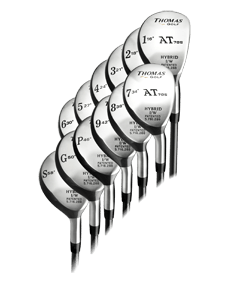So this is how you can see an alignment stick to better understand where you're accelerating throughout the golf swing. Now I’ve already spoken about the different type of field drills. We've spoken about how you can check visually where you are. But this is a slightly different drill, and this gives an audible feedback, so you can hear the difference that you're making, and it's exceptionally simple to do. As we've already spoken about, we want the speed of the club to be producing higher, and higher, and higher swing speeds until the point of the bottom of the swing or just after the point of impact where the club bottoms out in its swing arc. Now you can visually see this on video. You can use launch monitors to check this.
But if you want to get a very quick feedback, if you want the drill to be used on the ranges before you got to play for example, you can get an alignment stick and actually hear where you are accelerating. So getting set up is normal with an alignment stick. Just make some swings and try and hear where the bottom of the swing arc is, and that will be produced when it's moving its quickest. And you'll gain an audible noise from the alignment stick, that whipping sound. Now if you take a swing and all of a sudden the main noise comes from around this area here or from around this area here, then the fastest point of your swing is being produced before the ball.
Now that should mean that the wrists are unhinging, that the club is speeding up at this point and not at the bottom of the swing. So it’s happening like that and you're hearing this over here, we need to make sure that you are hearing it a little bit later. Now the easiest way to do this is getting setup and taking a normal swing but actually focusing and keeping your eyes on this point here. It's strange how sight and sound can intertwine quite well for this drill. So getting set up is normal, but then just checking that point beyond the ball around here, so it’s a little bit of an exaggeration taking the club back, and actually trying to produce the noise where you are looking. Now on that swing, I could feel the fact that my wrists were increasing — well not increasing, but maintaining the amount of angle.
I could feel that that was being held for much longer and it was releasing much later in the swing just by keeping my eyes on that point there. Now what this will do is it will give you a very good sensation of where the swing arc is bottoming out, and where your speeding throughout the swing. And it should help you move the bottom of the swing and the speed of the bottom of the swing more towards the left-hand side rather than losing it a little bit too soon on the right-hand side.





